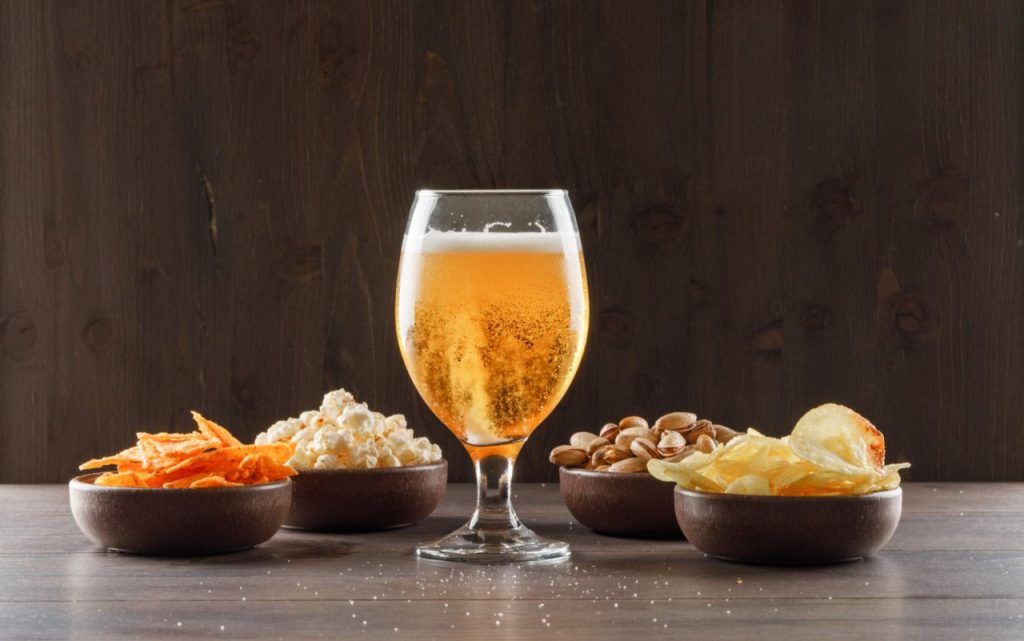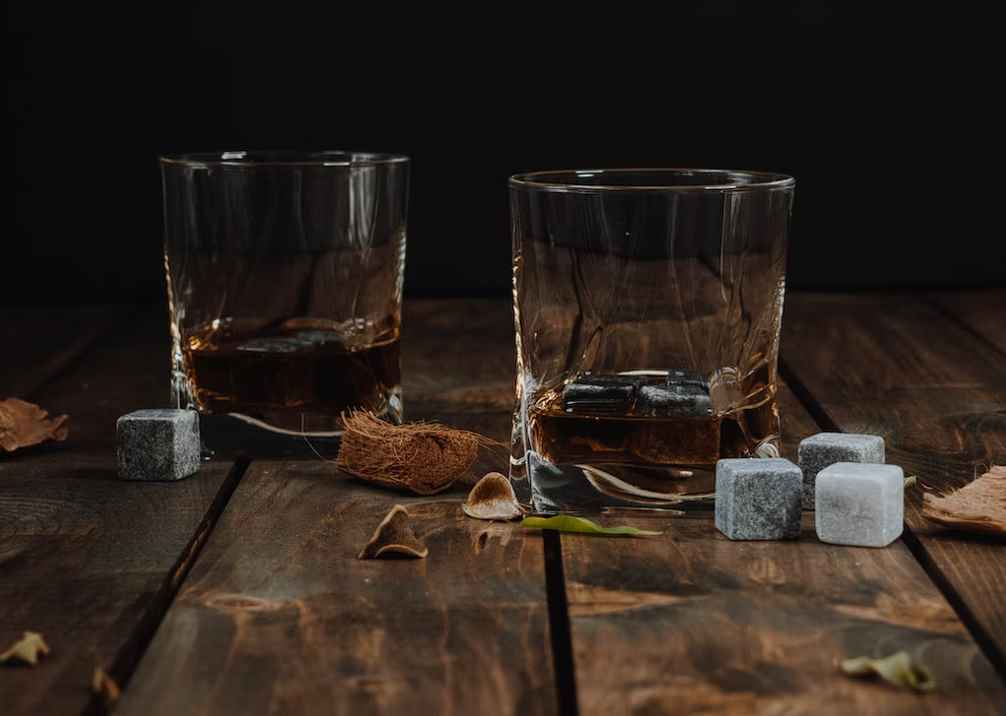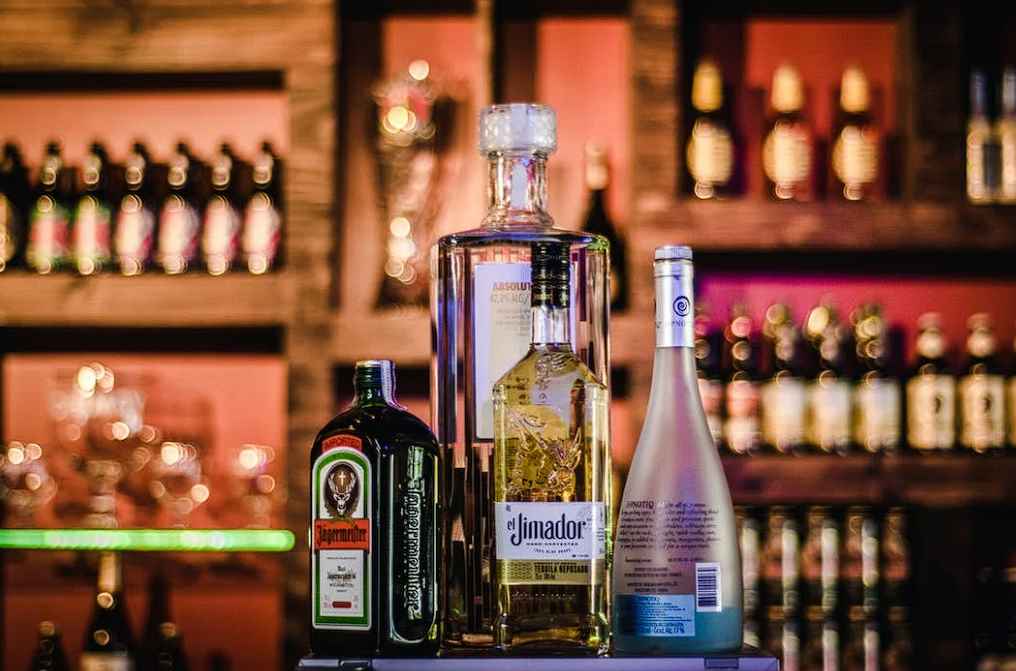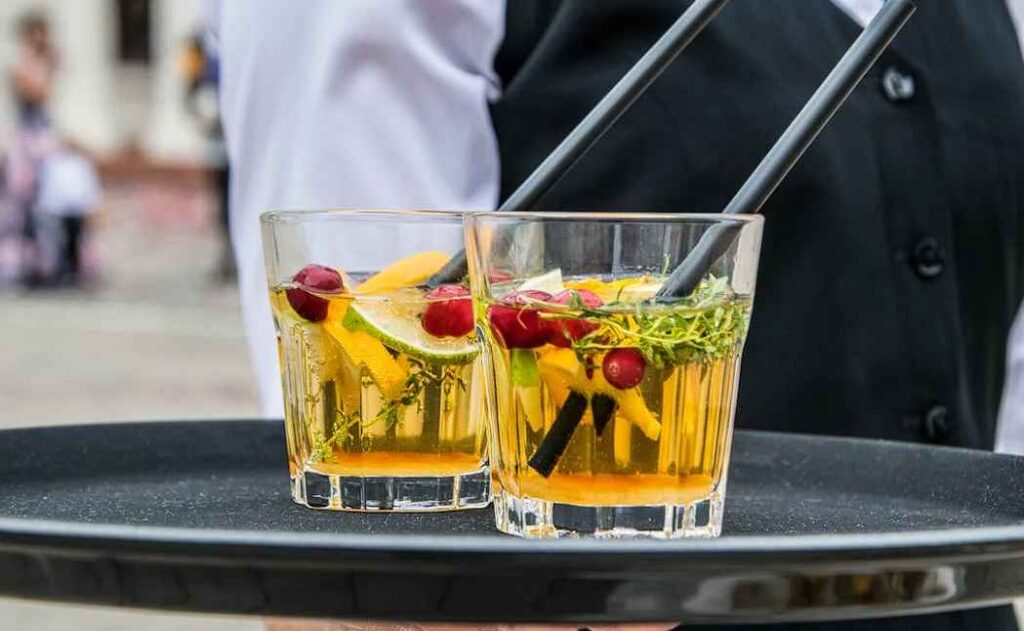The skill of distilling wine is timeless...and altered by time. It was common practise for the ancient Greeks and Romans, and it hasn't stopped there. Distillation is used to raise the "alcohol purity" of wine, or what is more commonly known as the "alcohol-proof" grade.
Making wine from scratch is no simple task; it takes practise to perfect the distillation process.
Vine must is fermented to produce wine, an alcoholic beverage. It's a complicated item that has to be handled with great care and precision at every step of the manufacturing process. All of these individual processes add up to the final quality of the wine.
Even a single slip up in the manufacturing process might significantly impact the finished beverage.
These issues, which we shall refer to as flaws, lower the wine's quality and the extent to which the buyer would enjoy it. If the wine is distilled into a high proof spirit, the flaws can be eliminated. In the next paper, we'll look at the problems with wines and how distillation can fix some of them.
Distillation is heating an alcoholic beverage under strict supervision to remove water and other impurities to concentrate the ethanol into a high proof spirit.
Fermentation with yeast is required to create wine or beer from their respective fruit or grain bases before distillation can occur. A still is used to heat the liquid before it is distilled into alcohol, such as wine or beer.
Column stills and pot stills are the two primary variations of stills. Each of these devices has its own method for removing ethanol from a mixture of organic molecules.
Ethanol is easily separated from water due to its lower boiling point. When the wine or beer base is heated, the ethanol boils out first, followed by the water. Ethanol evaporates, rising to the still's top where it is collected before being sent to a condenser for rapid cooling. It is only after the still's heated unit has been emptied of water and other organic compounds that the unit is cooled.
The boiling points of wine and beer are different because they are not chemically identical. Ethanol has a lower boiling point than water at 78.5 degrees Celsius compared to water's 100 degrees Celsius.
Other chemicals in the combinations boil at lower temperatures (78.5°C), at intermediate temperatures (100°C), and at higher temperatures (100°C). Low molecular weight organic molecules like methanol are among the first to boil, condense, and be collected. In the final distillate, these chemicals are undesirable. "Heads" or "forerun" refers to the first part of the distillate to be collected during a still run.
Following the removal of the volatile, low-molecular-weight chemicals, the ethanol is evaporated.
This consumable and potentially fermentable distillate fraction is called "hearts," and it's what's utilised to make spirits. The remaining distillate, known as the "tails," is less desirable than the ethanol itself because it includes greater alcohols and esters, which can water down the spirit.
What Is Distilled From Wine?
Wine distillation involves boiling the liquid and collecting the vapours to create a stronger alcohol product. Brandy, whisky, and vodka are just some of the distilled spirits that may be made using this method. Wine distillation requires a still, which is a specialised piece of equipment.
The wine must first be heated until it boils. In this way, the rising vapours may be channelled into the still. As a result, the vapours will be cooled until they condense into a liquid. There will be more alcohol in the end product than there was in the wine.
For Wine Distilling, Check Your Local Laws
It is wise to research the laws in your area before attempting a home winemaking project. It's crucial to know the regulations in your region, as many of them restrict the distillation of alcohol without a licence.
And even if you can legally distil wine at home, you could still be limited in how much you can make or how you can sell it. Some areas, for instance, prohibit the sale of homemade wine anywhere than farmers' markets or to individual customers. Please verify your local laws before starting to make your wine.
The Dangerous Distillate Must Be Discarded
Distillate from winemaking is a toxic substance, thus getting rid of it might be difficult. Contacting a local garbage removal firm is the simplest and safest option. They may schedule a pickup and appropriate disposal of the distillate. Take the distillate to a hazardous waste disposal site if you are unable to contact your local trash management firm.
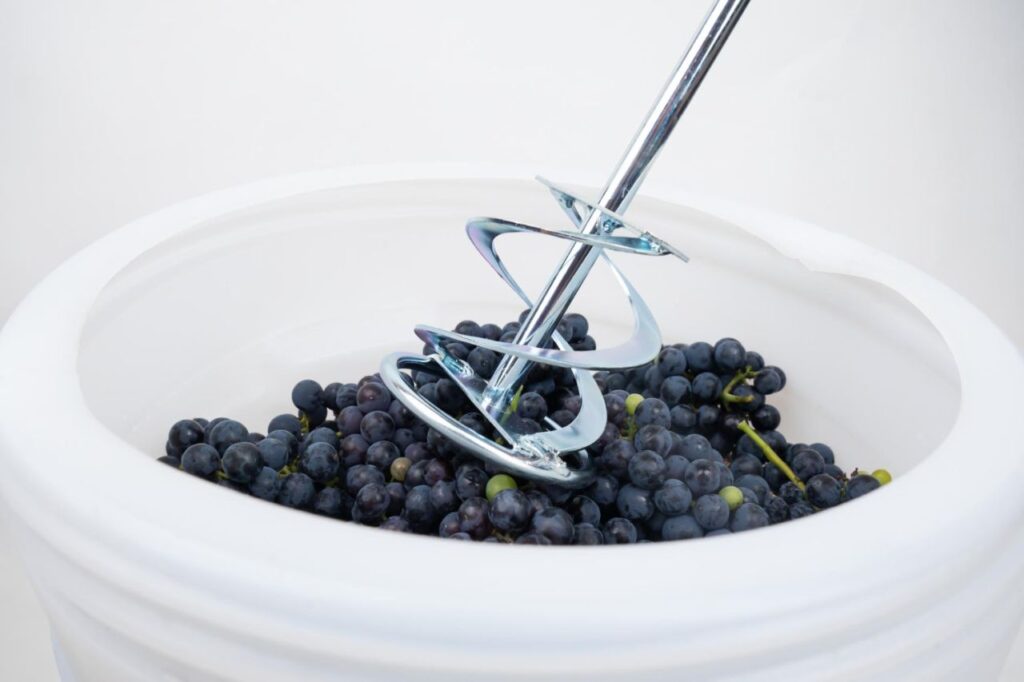
The distillate may be securely disposed of at these facilities because of their expertise in dealing with hazardous compounds. Finally, if you are having trouble getting rid of the distillate, you may always have it turned into wine by hiring a professional winery. They usually have the resources to dispose of the distillate in a responsible manner.
Determine The Final Product And Gather Necessary Materials (Distilling Wine)
Wine distillation is most successful when the distiller has a clear vision of the final product they hope to achieve. The type of still required and any wine adjustments necessary will depend on this. If you have an idea of what you want to make, the next step is to gather the necessary materials.
No doubt about it, wine is the most vital component. Along with the yeast, water, and a sugary liquid like honey or fruit juice are required. Picking the right yeast is important since it will affect the flavour of the end result. When you have everything you need, you can begin.
Fortified Wines, Including Port
The brandy used to fortify Port and other fortified wines is distilled wine. Fortified wines were created to preserve wine, but their unique flavour has made them a popular drink in their own right. Though Port is the most well-known fortified wine, other types exist, such as sherry, Madeira, and Marsala.
There is a general consensus that fortified wines are sweeter and more alcoholic than their dry counterparts. For this reason, they are usually consumed in small glasses after a meal. One must pay close attention to the labelling of fortified wines while making a purchase. Fortified wines are classified as "dry" when they have less than 4 grammes of sugar per litre, or "sweet" when they have more than 4 grammes of sugar per litre. Wines that are fortified to a "medium" degree are in the middle. Dry wines go well with cheese and nuts, whereas fortified wines are best served with dessert.
Brandy
Distilled wine is known as brandy. Wine is fermented into brandy, and then the wine is distilled. The final product normally has a booze content of 40-60% by volume. Typically, brandy acquires its distinctive flavour from being aged in wood barrels. Fruit or other substances may be added for flavouring on occasion. Brandy is often used as a cocktail component and is very delicious when consumed neat.
Consider the brandy's style and age before making your selection. To put it simply, brandies that are less than 10 years old tend to have a more delicate flavour profile, while older brandies tend to have a more robust one. A well-versed salesman should be able to help you make the right brandy selection.
Preparing A Wine Still
It's crucial to get the still all set up before you start distilling wine. Doing so will guarantee a problem-free procedure and superior results. To get you started, here are a few pointers:
- Make sure you pick a boat that's suitable for the job. Distillation can be done in either a glass or stainless steel container. Avoid adding copper since it might provide an unpleasant metallic taste to your finished product.
- Be sure to disinfect and clean your tools. Before you begin distilling, make sure all of your tools are spotless and sterile. Because of this, microbial and other contamination development will be stifled.
- Make sure you pick the proper bottle of wine. To get the best distillate, choose a wine with a high sugar content. If not, the finished product won't have enough alcohol in it.
- Make sure your still is set up correctly per the instructions provided. If you want your still to work properly, be sure to build it according to the directions that came with it.
- Follow the recipe's distillation directions to the letter. When you're ready, you may begin the wine distillation process. To ensure success and a successful conclusion, be sure to follow the recipe exactly as written.
Don't Forget To Warm Up The Wine!
The alcohol content of wine can be increased by the distillation process. Wine is evaporated at high temperatures and then condensed back into a liquid state. When wine is distilled, the alcohol concentration can be increased by as much as 50%.
- When doing wine distillation, there are a few factors to remember:
- To get the best results, your still should be spotless. Off-flavors can be transferred to the finished product from any dirt or residue left in the still.
- Slowly heating the wine is essential. Too rapid of heating will remove the flavourings, leaving a harsh spirit after distillation.
- Be sure to keep a close eye on the thermostat.
Distilling wine at temperatures between 160 and 170 degrees Fahrenheit yields the best results. Keeping these guidelines in mind will make wine distillation at home a pleasurable and fruitful hobby. However, care must be taken, and all safety precautions must be observed, while working with fire or alcoholic beverages.
The Distillation Process
Arranging The Still
The process of making wine from grapes requires a still to be constructed first. You should start by using hot water and a light detergent to clean your still. The still should then be filled with water and set on the heating element. The flame should be set to medium-high if you're using a gas stove, and high if you're using an electric one. At this time, you should pour your wine into the still.
The size of your still will determine how much wine you may use. It's best to keep the wine at a low simmer once it's started to boil. Wine vapour is produced during the simmering process and travels up the tube and into the condenser. The vapour will return to liquid form when it is cooled by the condenser. The wine you have here has been distilled.
In Search Of A Still
Copper alembic pots are a standard component of machinery in each distillery, from the smallest artisanal operation to the largest industrial facility. Alcoholic beverages often undergo fermentation and distillation in alembic pots.
One litre and two litre options provide the fewest difficulties when it comes to dealing with them during home distillation, but larger sizes are also accessible. They are the easiest to work with and produce the best results when distilling at home. They are sold in a wide range of shops throughout the country. When possible, it is recommended that all alembic pot purchases be made online.
Hold A Glass Under The Faucet Drain
Instead of putting water in the still, fill up a bucket and pour it over the top. Water used for re-condensing evaporated wine must be cooled drastically to have any chance of success. Indeed, this is crucial.
The condenser tube, which should be located inside the bucket, will escape via a spout fastened to the side of the container. Proper fasteners should be used for this. There shouldn't be any dripping if the tube is properly placed into the bucket's spout. In other words, water cannot enter the bucket.
Drop The Still Into The Kettle
It is crucial that the pot is large enough to hold both the alcoholic beverage and the water. Dutch ovens are ideal for this purpose since they can hold a still with a capacity of two litres, making them a versatile tool.
Fill The Saucepan With Water Until It Reaches The 3-Cup Mark
The water from the sink's tap must be poured into the Dutch oven immediately. It may leak if you overfill it, so be careful. In such case, things will get quite complicated. Overfilling it, though, may cause leakage down the road.
The Condenser Needs Some Ice Water
Most condensers may be bought with a selection of spouts in various sizes. To begin, a tap is attached to the spout and the spout is angled downward in a drainage direction. A drainage angle forms as a result. Then, attach the first tube to the spout's uppermost opening. The second tube will have one end inserted into the sink and the other sticking out of the hole. Finally, attach the third tube to the spout's downward-pointing end.
It's possible that a condenser coil may be fashioned out of some copper tubing and a bucket in the absence of more appropriate materials. If you're out of choices, you're out of choices. In the absence of any other viable options, you would be forced to take this path.
A Still Should Be Filled With Wine Until It Is About Three-Quarters Full
Wine shouldn't be poured into the Dutch oven; rather, it should be poured into the still. A wine will boil to the surface of a hot vessel if it is filled beyond this threshold. You can't get wine to boil if the still isn't full. If you continue filling the container to that point, you will have the aforementioned problem.
Run A Tube From The Pot To The Condenser
To begin, place the still on its cover and seat it on the equipment. The part of the arm that projects over the lid is called the condenser.
When the lid is closed, the uppermost part of the arm protrudes like this. There is a spout for attaching the copper tubing and everything else you need to get started is included. Everything you need is included of the deal.
Separate from the other buckets, the other end of the tube must be positioned such that it may be inserted into a spout. All of these parts, if not all, will usually be attached to the still you purchase.
Wine Warming Up
The first stage in the process of distilling wine is to bring the wine to a boil. Although there are other approaches accomplish this, the use of a distillation flask is by far the most popular. The wine is then put into the distillation flask and heated using a Bunsen burner.
When the wine reaches a boil, the heat source is removed and the distillation process begins. It is crucial that the wine is kept at a steady temperature throughout the distillation process to produce a high-quality end product. Distilled wine may be kept indefinitely if kept in an airtight container following the distillation procedure.
Raise The Heat Until The Alcohol Begins To Seep Down The Glass
You should take extra safeguards wherever they may be essential and maintain a constant vigilance while they are still. Rising the water temperature to the point of boiling would speed up the distillation process and get the liquid into the glass. Should the ocean's temperature keep rising, this would be the case.
This is the kind of thing that would happen if the temperature kept rising. When you discover it has started to leak, you must act quickly to alter the temperature. As soon as you realise it's leaking, you can stop it.
- There is a direct correlation between the rate at which the drip is administered and the amount of alcohol collected in each drip. As your distillation expertise grows, you'll unlock the option to adjust the "drip rate," or the pace at which liquid is collected. This will be proportional to how quickly the liquid is collected.
- Do not ever utilise a naked flame. When distillation is being done indoors, an electric burner is the most dependable and safest alternative because it does not require the use of open flames. Propane and natural gas stoves are two options for outdoor cooks who like to use these fuels.
Keep Replacing The Bottles And Doing Quality Checks On The Liqueur
Regularly checking this page will let you to track the development of your brandy and make modifications as needed. If something goes wrong, you'll want to be prepared with a stock of new bottles.
Brandy's quality improves with age, and this is noticeable in both the scent and the flavour. Dropping proof is a natural indicator of brandy's improving quality with age.
Temperature Needs To Be Lowered In Order To Keep The Distillation Process Going
You should aim for a water temperature of about 170 degrees Fahrenheit. Accurate temperature readings may be obtained by inserting a thermometer into the condenser's spout and reading the reading.
For highly accurate temperature readings when no thermometer is available, a thermocouple is a good backup. If you need to take an accurate temperature reading but don't have a thermometer on hand, you may use a thermocouple instead.
In order to get an accurate reading of the temperature, you need to keep a careful check on how fast the temperature is dropping. Your still's temperature is optimal and running at peak efficiency when the distillate falls between one and three times in the space of a second.
Keep The Spirit That Smells Like Fruit Alive
Alcohol extraction comes after the removal of the head. After the head has been removed, we proceed to what is sometimes called "the core of the operation." After letting your own nose's aroma come into touch with it, you will be able to identify it. It will have a lovely perfume that is evocative of the many different kinds of fruits and herbs that were used to make the wine. As a result, the wine will have a smell that is reminiscent of both fruit and herbs.
A higher temperature within the still may be accelerating the flow of liquid presently contained therein compared to what would happen under more typical conditions. Gather the liquid into a set of somewhat tiny glasses, and after they are filled, refill them.
Throw Away The Liquid Since It Is Beginning To Lose Its Colour
Given enough time, the distillate will take on a milky appearance. The presence of a fruity odour was mentioned earlier in the chat; use your sense of smell to analyse the scenario and see if you can pinpoint its source.
Next, the brandy is diluted with water and a broad variety of various kinds of alcohol, all of which have a foul odour, getting rid of any remaining scent. This step follows the removal of the offending odour. When its intended purpose has been met, this part (the "tail") can be discarded because it is no longer necessary.
Any Distillate That Smells Bad Should Be Thrown Away
Never use more than fifty millilitres of a product at once, as that amount may contain harmful ingredients. It has a high proportion of acetone in addition to a high concentration of wood alcohol, both of which, in large enough concentrations, have an odour that may be characterised as rotten. This fluid might be called the head or the foreshot, depending on which term was prefered. Just dump it.
Cleaning The Still
First, a wine must undergo secondary fermentation in order to be distilled into brandy. After the primary fermentation is complete, the wine is moved to a distillation tank to undergo a secondary fermentation procedure. It is at this time that yeast is added to the wine in order to ferment the grape juice into alcohol by feeding on the sugars in the wine.
The tank is capped and the mixture is let to settle when the second fermentation is complete. The sediment settles to the bottom of the tank after a few days, and the liquid is drained and transferred to another storage container. To prevent unpleasant aftertastes from developing while the brandy is ageing, it is crucial to filter out as much sediment as possible at this stage.
Put An End To The Fire
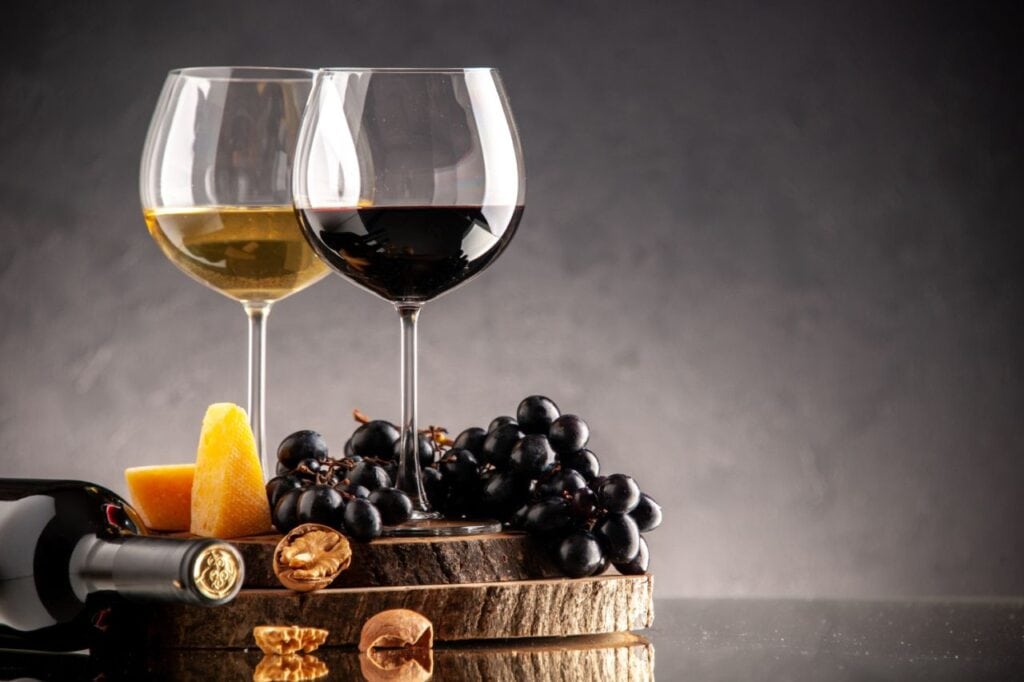
If you want to go to the following step, you need to make sure the flame on your burner is completely out. As soon as you do that, you may go on to the next phase. Temperatures won't be back to normal in here for a while.
As a stopgap measure, you should prioritise keeping the brandy in a completely dark cabinet or cellar at a temperature substantially lower than room temperature. This is something that has to be done immediately.
Make Sure You Use Some Liquid Soap And Water To Wash Out The Still
Normal dish soap may be used to deodorise the still, which is the only real prerequisite. The still may be cleaned using the water from the sink. It's the best strategy.
Any remaining stains can then be removed with a mild sponge and some plain old-fashioned elbow grease. Additionally, the condenser should be cleaned if necessary.
Taking Out The Still And Emptying Out The Water Bath
Upon completion of the cooking process, it is crucial to check that the Dutch oven still contains some water. First, be gentle as you carry it to the sink, and then, after you've reached your goal, pour the contents of the container into the sink.
Ten to fifteen minutes after stirring it up, the temperature will have settled to a position where it is simpler to keep the correct level at the required time. The most dire scenario is that an expensive piece of cookware is accidentally knocked on the floor, where it will inevitably be ruined. You should not put yourself in danger in any manner by taking a chance on this.
Green Marks May Be Scrubbed Away Using A Mixture Of Vinegar And Salt
Patination is a natural process, thus unused copper vessels will eventually acquire a green patina on the outside. Due to the green hue of patination, this will occur. After adding a quarter cup of vinegar to the still, one tablespoon of salt will be added to the mixture.
This phase of the procedure is now complete. Performing another water rinse on the still is an essential last step before the procedure can be considered complete. The metal may be restored to its original condition by polishing it using a sponge. You may put the metal to better use in this way.
Disconnect The Still's Condenser And Cover
The tube construction of the condenser coil makes its removal very easy. The fact that tube is used as the main component makes this feasible. Due to its employment in making the condenser coil, tubing plays a crucial role. This has to be taken apart so that the top of the still may be reached. Be very careful when you remove the opposite end of the condenser coil from the bucket of cold water and then pour the water from the opposite end of the coil.
Conclusion
Distillation is the process of heating an alcoholic beverage under strict supervision to remove water and other impurities. Fermentation with yeast is required to create wine or beer from their respective fruit or grain bases. A still is used to heat the liquid before it is distilled into alcohol. Wine distillation involves boiling the liquid and collecting the vapours to create a stronger alcohol product. Brandy, whisky, and vodka are some of the distilled spirits that may be made using this method.
Wine distillation requires a still, which is a specialised piece of equipment. Distillate from winemaking is a toxic substance, thus getting rid of it might be difficult. Contacting a local garbage removal firm is the simplest and safest option. Fortified wines were created to preserve wine, but their unique flavour has made them a popular drink in their own right. Wine is fermented into brandy, and then the wine is distilled.
The final product normally has a booze content of 40-60% by volume. Brandy is often used as a cocktail component and is very delicious when consumed in combination with other ingredients. Distilling wine at temperatures between 160 and 170 degrees Fahrenheit yields the best results. Alcoholic beverages often undergo fermentation and distillation in alembic pots. Care must be taken, and all safety precautions must be observed, while working with fire or alcoholic beverages.
Dutch ovens are ideal for this purpose since they can hold a still with capacity of two litres. Condenser tube, which should be located inside the bucket, will escape via a spout fastened to the side of the container. Overfilling it, though, may cause leakage down the road.
The first stage in the process of distilling wine is to bring the wine to a boil. The wine is then put into a distillation flask and heated using a Bunsen burner.
Rising the water temperature to the point of boiling would speed up the distillation process. Brandy's quality improves with age, and this is noticeable in both the scent and the flavour. Dropping proof is a natural indicator of brandy's improving quality with age. Your still's temperature is optimal and running at peak efficiency when the distillate falls between one and three times in the space of a second. Any Distillate That Smells Bad Should Be Thrown Away.
Never use more than fifty millilitres of a product at once, as that amount may contain harmful ingredients. Make sure the flame on your burner is completely out before you start distilling. After cooking, it is crucial to check that the Dutch oven still contains some water. Any remaining stains can then be removed with a mild sponge and some plain old-fashioned elbow grease. The metal may be restored to its original condition by polishing it using a sponge.
Content Summary
- To raise the "alcohol purity" of wine, or what is more commonly known as the "alcohol-proof" grade, distillation is used.
- Making wine from scratch is no simple task; it takes practise to perfect the distillation process.
- These issues, which we shall refer to as flaws, lower the wine's quality and the extent to which the buyer would enjoy it.
- If the wine is distilled into a high proof spirit, the flaws can be eliminated.
- In the next paper, we'll look at the problems with wines and how distillation can fix some of them.
- The boiling points of wine and beer are different because they are not chemically identical.
- It's crucial to know the regulations in your region, as many of them restrict the distillation of alcohol without a licence.
- And even if you can legally distil wine at home, you could still be limited in how much you can make or how you can sell it.
- Contacting a local garbage removal firm is the simplest and safest option.
- They may schedule a pickup and appropriate disposal of the distillate.
- Take the distillate to a hazardous waste disposal site if you are unable to contact your local trash management firm.
- Finally, if you are having trouble getting rid of the distillate, you may always have it turned into wine by hiring a professional winery.
- They usually have the resources to dispose of the distillate in a responsible manner.
- If you have an idea of what you want to make, the next step is to gather the necessary materials.
- Consider the brandy's style and age before making your selection.
- Preparing A Wine StillIt's crucial to get the still all set up before you start distilling wine.
- Make sure you pick the proper bottle of wine.
- Follow the recipe's distillation directions to the letter.
- When you're ready, you may begin the wine distillation process.
- To get the best results, your still should be spotless.
- Slowly heating the wine is essential.
- At this time, you should pour your wine into the still.
- The size of your still will determine how much wine you may use.
- Alcoholic beverages often undergo fermentation and distillation in alembic pots.
- The condenser tube, which should be located inside the bucket, will escape via a spout fastened to the side of the container.
- There shouldn't be any dripping if the tube is properly placed into the bucket's spout.
- The water from the sink's tap must be poured into the Dutch oven immediately.
- Wine shouldn't be poured into the Dutch oven; rather, it should be poured into the still.
- When the lid is closed, the uppermost part of the arm protrudes like this.
- There is a spout for attaching the copper tubing and everything else you need to get started is included.
- Separate from the other buckets, the other end of the tube must be positioned such that it may be inserted into a spout.
- Wine Warming UpThe first stage in the process of distilling wine is to bring the wine to a boil.
- The wine is then put into the distillation flask and heated using a Bunsen burner.
- Rising the water temperature to the point of boiling would speed up the distillation process and get the liquid into the glass.
- Keep Replacing The Bottles And Doing Quality Checks On The Liqueur.
- Regularly checking this page will let you to track the development of your brandy and make modifications as needed.
- Brandy's quality improves with age, and this is noticeable in both the scent and the flavour.
- Dropping proof is a natural indicator of brandy's improving quality with age.
- In order to get an accurate reading of the temperature, you need to keep a careful check on how fast the temperature is dropping.
Distillation is used to produce many types of spirits, but in the wine industry, distilled wine can be used to produce brandy and port. Although the base beverage determines the neutrality and flavor of the distilled spirit, distillation can also be used to remediate some wine defects.
It must be made from specific varieties of grapes, must be double distilled in copper alembic stills and aged for at least two years in oak casks. During the production, the grapes are pressed and the obtained juice is left to ferment with the native's wild yeasts converting the sugar into alcohol.


